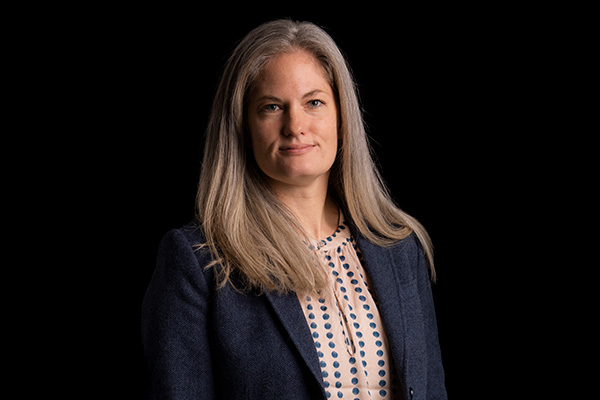Vivi Kathrine Pedersen
Research leader

Project title
Shaping Earth's surface - the missing link in sea-level research (EiS)
What is your project about?
Future sea-level projections are very uncertain – and that is a huge problem as millions of people live near the coast. The uncertain projections are mainly due to the fact that we do not understand how the large ice sheets in Greenland and Antarctica will behave in the future climate. And we cannot get observations from the future. We can, however, build a better understanding of the future by looking at the past – at the million-year long histories of the ice sheets. With EiS, I want to investigate the interaction between the Greenland ice sheet, the landscape under the ice, and the resulting sea level over thousands of years. I will develop numerical models that simulate both the ice sheet and the landscape formation under the ice, so that we can relate the models directly to past observations from geological archives (sediment layers under the seabed) – and understand what they actually tell us about the long-term behavior of ice sheets.
How did you become interested in your particular field of research?
I have always been fascinated by our planet Earth, and especially magnificent phenomena such as glaciers, ice sheets, and mountains. It was therefore obvious that I should study Geoscience at the university after high school. While studying, I was particularly taken by numerical approaches to Geoscience and also programming, which I had never been introduced to before. Numerical experiments (where we simulate various processes on Earth with computer models) help us to investigate and understand connections and interactions between processes, over time scales that are much longer than a lifetime and that are difficult to observe and understand in other ways.
What are the scientific challenges and perspectives in your project?
Geological observations from the past can be used as analogies for the future. In fact, they are necessary ingredients to improve future model projections. However, to gain insight from past observations, we need to understand and take into account all the processes that operate over geological time scales – for example, the formation of kilometre-deep fjords as well as local changes in sea level that affect how an ice sheet behaves. The challenge in EiS is to combine, for the first time, numerical modelling of the ice cap, the landscape under the ice, and sea level. However, by comparing the models with geological observations, we can improve our understanding of the coupled system of landscape, sea level and ice, and explore how they have evolved under varying climates in the past – so that we can better understand how they will change under future climate scenarios.
What is your estimate of the impact, which your project may have to society in the long term?
With an increased understanding of past interactions between ice sheets, landscape formation under the ice, and variations in global sea level, I believe that we can also improve our understanding of the future behaviour of the current ice sheets. With EiS, I have chosen to focus on the Greenland ice sheet, that can potentially contribute to a global sea-level rise of about 7 metres. However, the processes at play in Greenland will also be in effect for the Antarctic ice sheet, that can potentially contribute with an even greater sea-level rise. My ultimate goal is therefore that we can improve future sea level projections globally.
Which impact do you expect the Sapere Aude programme will have on your career as a researcher?
his Sapere Aude grant opens up for a completely new chapter in my research career. I can expand my research group with talented PhD students and a postdoc, I get the opportunity to develop an exciting new research field, and I get to strengthen my international collaborations. Sapere Aude thereby gives me the opportunity to achieve international recognition, to attract further research funding in the future, and not least to develop new talents within an important future field of research.
Background and personal life
I live in Hørning south of Aarhus with my husband and our two children aged 5 and 7. We have previously lived and worked for several years abroad, but are now happy to be back in Denmark close to family. In my spare time I enjoy spending time with family and friends, I enjoy modern pop culture and a multitude of different podcasts, and then I have just rediscovered the joy of playing floorball.
View all research leaders here
Research institution
Aarhus University
Research field
Geoscience
City of your current residence
Skanderborg
High school
Aalborghus Gymnasium
